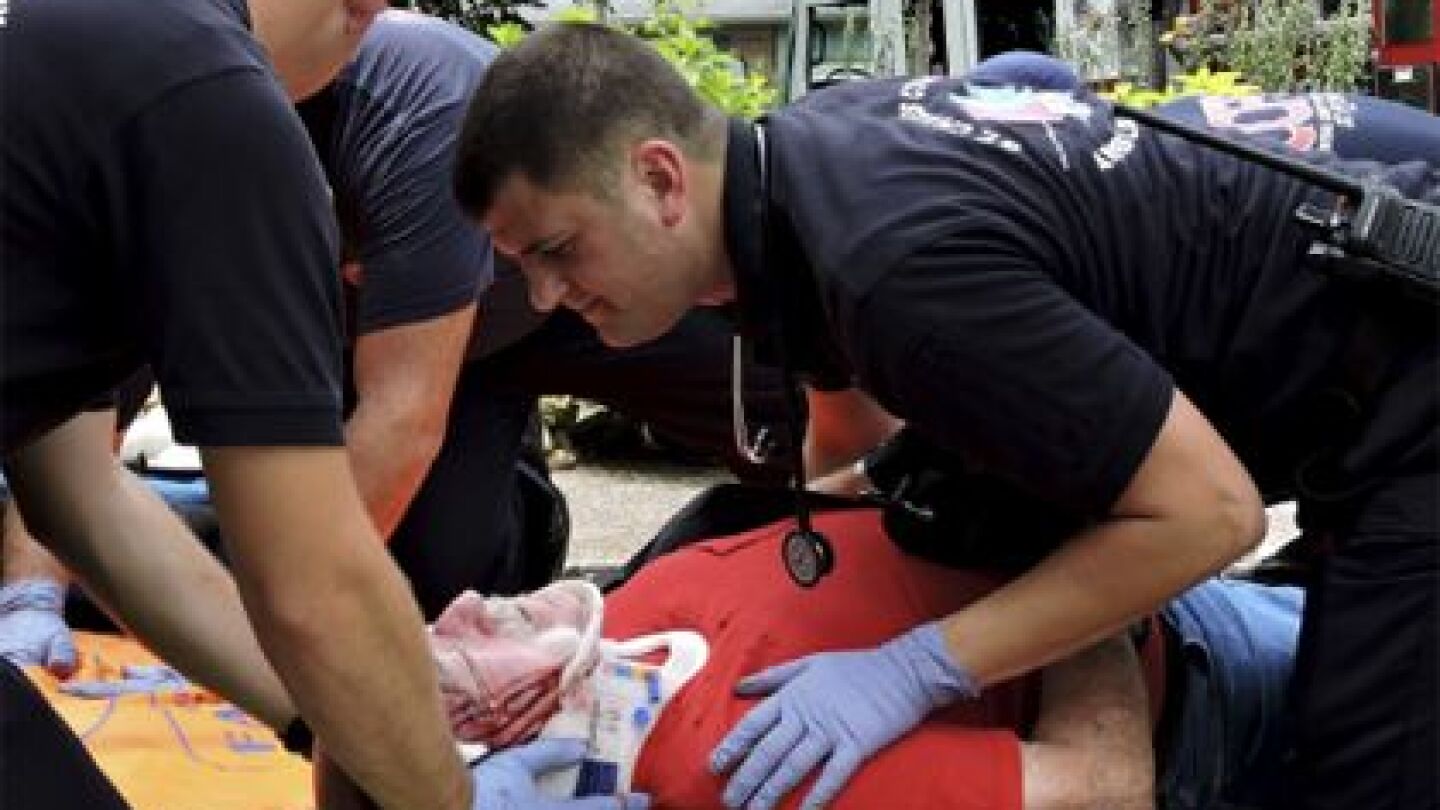Patient Assessment
Patient assessment is the process an EMT or paramedic follows to evaluate an injured or ill patient. The process includes a scene size-up, which is the identification and mitigation of risks, a primary assessment to find and fix life threats and a secondary assessment to perform a focused history and physical exam of the patient. Each step is an opportunity to collect information that will guide treatment and inform a transport decision. In the ��ݮӰ�� Patient Assessment topic find the latest news about patient assessment and top resources to improve your patient assessment skills.
A complete narrative in the patient care report that is reviewed and signed by the patient is your best protection against liability for the non-transport decision
OPQRST is an important part of patient assessment and the start of a conversation with the patient about their pain complaint
A pioneering EMS program is helping patients with opioid use disorder find a path to recovery
Volcano Rescue Team EMTs and paramedics reached the patient via a side trail while technical crews set up rope systems and an artificial high directional to reach the victim
A tree worker suspended 47 feet in the air suffered a broken arm and blood loss after a falling piece of the tree kicked back during chainsaw work
FDNY fire and EMS personnel had to breach walls to access and rescue the trapped worker
Modesto Fire Department dispatched multiple units following a rescue call, which was upgraded to a technical rescue
OMI President Felix Marquez shares how VR training is helping rural Florida EMS agencies maintain critical pediatric emergency skills
Video shows several people on and underneath the porch roof before the collapse
A man suffered burns to his face, neck, chest, and arms before officers extinguished the flames
Ascension All Saints Hospital recognized Racine Fire Department paramedics and medical staff for their swift response in treating a stroke patient
Photos and videos posted by news outlets showed passengers standing on a plane’s wing as smoke surrounded the aircraft
A worker was hospitalized after a container of muriatic acid was improperly discarded with household trash, releasing hazardous fumes when compacted
Think you or someone you know might have measles? Here’s what you need to know
Realistic scenarios that reflect the patients EMTs and paramedics regularly encounter are critical to preparing students for the challenges of the EMS profession
A single-engine plane crashed in a retirement community parking lot, bursting into flames, but all five aboard survived
First responders in Orangeburg County lowered a rescuer using a tripod and rope system to lift the victim, decontaminated her and transferred her to EMS for evaluation
What do femoral pulse, radial pulse and carotid pulse actually indicate?
Firefighters have responded at least twice to Hemet Global Medical Center to test for carbon monoxide and other gases but did not detect any
Residents of the Landmark Nursing Home in Bardstown, as well as staff and police officers, were treated for smoke inhalation
“Our commitment to take care of others is not a political undertaking; it represents the greatest of social contracts in helping our fellow humans in their time of need.”
Avoid false blood pressure readings that could impact patient care. Discover the most frequent BP measurement mistakes and expert-backed techniques for accuracy.
A joint NAEMSP, NASEMSO, NEMSMA, NAEMT, APA position statement prioritizes patient and provider safety
The need for data-driven decisions in managing aggressive patients while ensuring safety and compliance
Richland County EMS examined 13 people at the scene in Columbia, with three transported to a hospital
A burned e-bike was found in the Queens house along with propane tanks and home oxygen
Understand the causes, signs and symptoms, and prehospital treatment for kidney injury
Rescuers in San Bernardino County used ropes and drones to rescue a teen suffering from hypoxia, dehydration and hypothermia in the Rimrock area
I continued my verbal assault until the patient apologized to me with tears in his eyes
MOST POPULAR
- ‘This is evil': Authorities find multiple improvised explosives inside truck in New Orleans attack
- La. health department, Acadian Health begins pilot program to keep ‘super-utilizers’ out of EDs
- 30 feet to catastrophe: The price of a higher wall — injuries at the U.S.-Mexico border
- Why it’s not just about lights and sirens
- 8 dead, at least 40 injured in Fla. bus crash






























